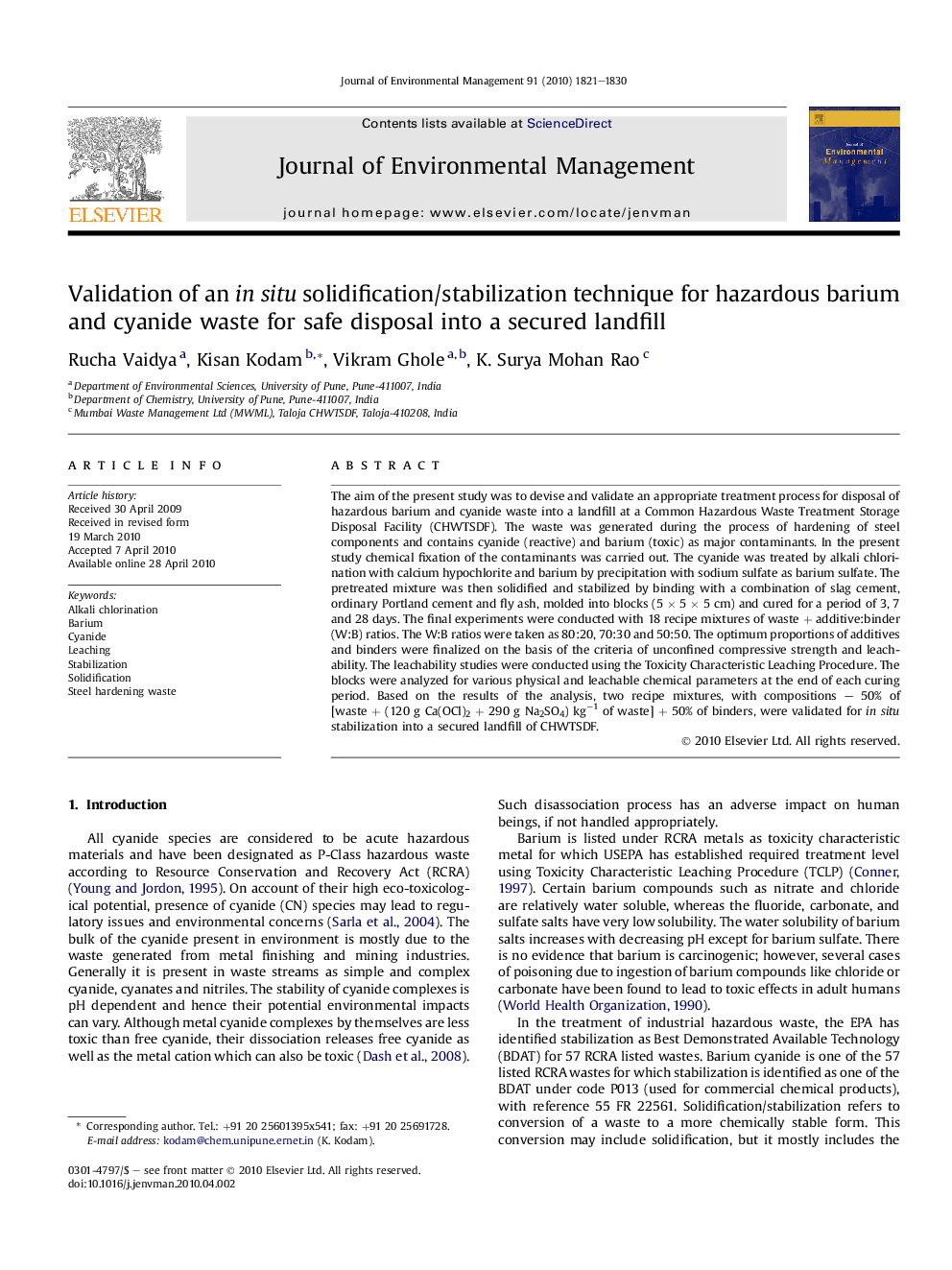| Article ID | Journal | Published Year | Pages | File Type |
|---|---|---|---|---|
| 1057431 | Journal of Environmental Management | 2010 | 10 Pages |
The aim of the present study was to devise and validate an appropriate treatment process for disposal of hazardous barium and cyanide waste into a landfill at a Common Hazardous Waste Treatment Storage Disposal Facility (CHWTSDF). The waste was generated during the process of hardening of steel components and contains cyanide (reactive) and barium (toxic) as major contaminants. In the present study chemical fixation of the contaminants was carried out. The cyanide was treated by alkali chlorination with calcium hypochlorite and barium by precipitation with sodium sulfate as barium sulfate. The pretreated mixture was then solidified and stabilized by binding with a combination of slag cement, ordinary Portland cement and fly ash, molded into blocks (5 × 5 × 5 cm) and cured for a period of 3, 7 and 28 days. The final experiments were conducted with 18 recipe mixtures of waste + additive:binder (W:B) ratios. The W:B ratios were taken as 80:20, 70:30 and 50:50. The optimum proportions of additives and binders were finalized on the basis of the criteria of unconfined compressive strength and leachability. The leachability studies were conducted using the Toxicity Characteristic Leaching Procedure. The blocks were analyzed for various physical and leachable chemical parameters at the end of each curing period. Based on the results of the analysis, two recipe mixtures, with compositions – 50% of [waste + (120 g Ca(OCl)2 + 290 g Na2SO4) kg−1 of waste] + 50% of binders, were validated for in situ stabilization into a secured landfill of CHWTSDF.
